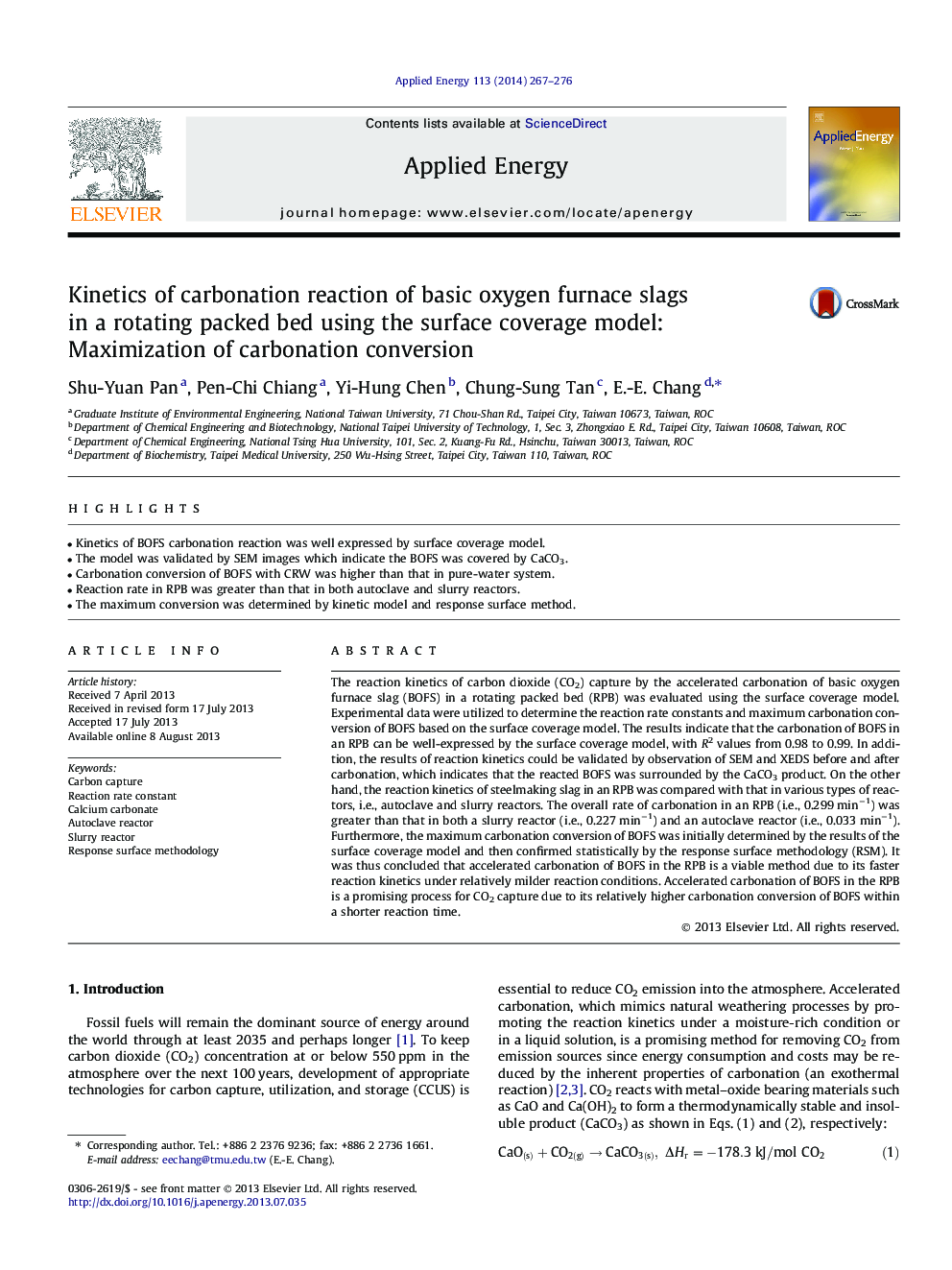| Article ID | Journal | Published Year | Pages | File Type |
|---|---|---|---|---|
| 6691879 | Applied Energy | 2014 | 10 Pages |
Abstract
The reaction kinetics of carbon dioxide (CO2) capture by the accelerated carbonation of basic oxygen furnace slag (BOFS) in a rotating packed bed (RPB) was evaluated using the surface coverage model. Experimental data were utilized to determine the reaction rate constants and maximum carbonation conversion of BOFS based on the surface coverage model. The results indicate that the carbonation of BOFS in an RPB can be well-expressed by the surface coverage model, with R2 values from 0.98 to 0.99. In addition, the results of reaction kinetics could be validated by observation of SEM and XEDS before and after carbonation, which indicates that the reacted BOFS was surrounded by the CaCO3 product. On the other hand, the reaction kinetics of steelmaking slag in an RPB was compared with that in various types of reactors, i.e., autoclave and slurry reactors. The overall rate of carbonation in an RPB (i.e., 0.299Â minâ1) was greater than that in both a slurry reactor (i.e., 0.227Â minâ1) and an autoclave reactor (i.e., 0.033Â minâ1). Furthermore, the maximum carbonation conversion of BOFS was initially determined by the results of the surface coverage model and then confirmed statistically by the response surface methodology (RSM). It was thus concluded that accelerated carbonation of BOFS in the RPB is a viable method due to its faster reaction kinetics under relatively milder reaction conditions. Accelerated carbonation of BOFS in the RPB is a promising process for CO2 capture due to its relatively higher carbonation conversion of BOFS within a shorter reaction time.
Keywords
Related Topics
Physical Sciences and Engineering
Energy
Energy Engineering and Power Technology
Authors
Shu-Yuan Pan, Pen-Chi Chiang, Yi-Hung Chen, Chung-Sung Tan, E.-E. Chang,
